












It’s been a huge couple of months at Capricorn with the launch of our two State of the Nation reports, announcing our first-ever Rising Stars Region Winners, celebrating a record-breaking Member Returns and welcoming a new Director at our AGM.
It was great to spend some time with our New Zealand Community last month at the launch of our NZ State of the Nation report and our Gala Dinner & Trade Show in Auckland. The automotive industry in New Zealand continues to face similar challenges to Australia, however in good news, there’s signs the skills shortage is beginning to ease in New Zealand. Achieving a good work-life balance continues to be the most pressing challenge, as Members juggle the demands of running their operations.
I’m proud that Capricorn continues to support business owners, with a record $100 million in Member Returns for the first time in our history. Member Returns reward Members for being a part of our cooperative by returning our profits to them via a $20 million Trade Rebate, 7 cent dividend per share (fully franked in Australia, partially franked in New Zealand) and millions of Rewards Points earned on purchases throughout the year. If you’re not sure what returns you’ve received, take a look at your Wealth Certificate available through myCAP or have a chat to your Area Manager.
This year Capricorn expanded our Rising Stars Apprentice of the Year Award to announce Region Winners as well as an Overall Winner. It’s been fantastic to meet and hear from the winners at each of the Gala Dinners we’ve had so far. Listening to them talk passionately about the industry reminds all of us the importance of celebrating the outstanding people we have in our Community — they are the leaders (and Members) of the future. You can read about the Region Winners in this edition of Ignition and on our website. The Overall Winner will be announced this month, so watch this space.
Finally, thank you to everyone who voted in the VIC/TAS and NSW/ACT Member Director Election earlier this year. Congratulations to Lydia Stjepanovic on her re-election as the NSW/ACT Member Director. We were also delighted to welcome Anthony Shaw, our newly elected VIC/TAS Member Director, to the Board at the AGM.

Brad Gannon Group CEO
4 FINDINGS FROM OUR 2025 STATE OF THE NATION REPORT
A comprehensive snapshot of NZ’s aftermarket industry.
6 MEET OUR 2025 RISING STARS REGION WINNERS
The star apprentices driving the industry forward.
8 OUR SUCCESS IS YOUR SUCCESS
Capricorn is celebrating $100 million in Member Returns.
10 KEEPING YOUR ACCOUNT SAFE
Introducing Capricorn ID and multi-factor authentication.
12 CLASSIC/FUTURE RIDE: THE RENAULT 5 TURBO 3E
How Renault’s new hot hatch EV is reviving an 80s rally legend.
16 THE SKILLS SHORTAGE IS A MANAGEABLE CHALLENGE
7 ways to minimise the impact on your business.
Now in its sixth year, the Capricorn State of the Nation report continues to offer a comprehensive snapshot of New Zealand’s automotive aftermarket industry — built from the ground up with insights from the people who live and breathe it every day. In 2025, more than 330 Capricorn Members across the country contributed to the report, offering a rich and authentic view of the sector’s current state and future direction.
At its core, the State of the Nation report serves two vital purposes. First, it builds a robust dataset that captures the realities of the automotive industry in New Zealand - insights that Capricorn leverages to represent its Members' interests in discussions with policymakers. Second, it provides business owners with practical insights they can use to shape decisions, improve operations, and plan for the future.
Despite ongoing economic and labour pressures, the 2025 report paints a picture of a sector that is resilient, forward-looking, and determined to grow. A record 80% of Capricorn Members say they plan to grow or improve profitability over the next 12 months. This optimism is reflected in the Capricorn Confidence Index, which rose to its highest level yet—71.2—up from 68.0 in 2024.

This confidence is not unfounded. Workshops are seeing more vehicles per week (42.5 on average), and turnover has increased by 11% to an average of $1.23 million. Business owners are investing in operational efficiency, adopting digital tools, and upskilling their teams to meet demand and stay competitive.
While the outlook is positive, challenges remain. For the second year in a row, maintaining a healthy work-life balance is the top concern for business owners, with 52% identifying it as a major issue. The personal toll of running a small
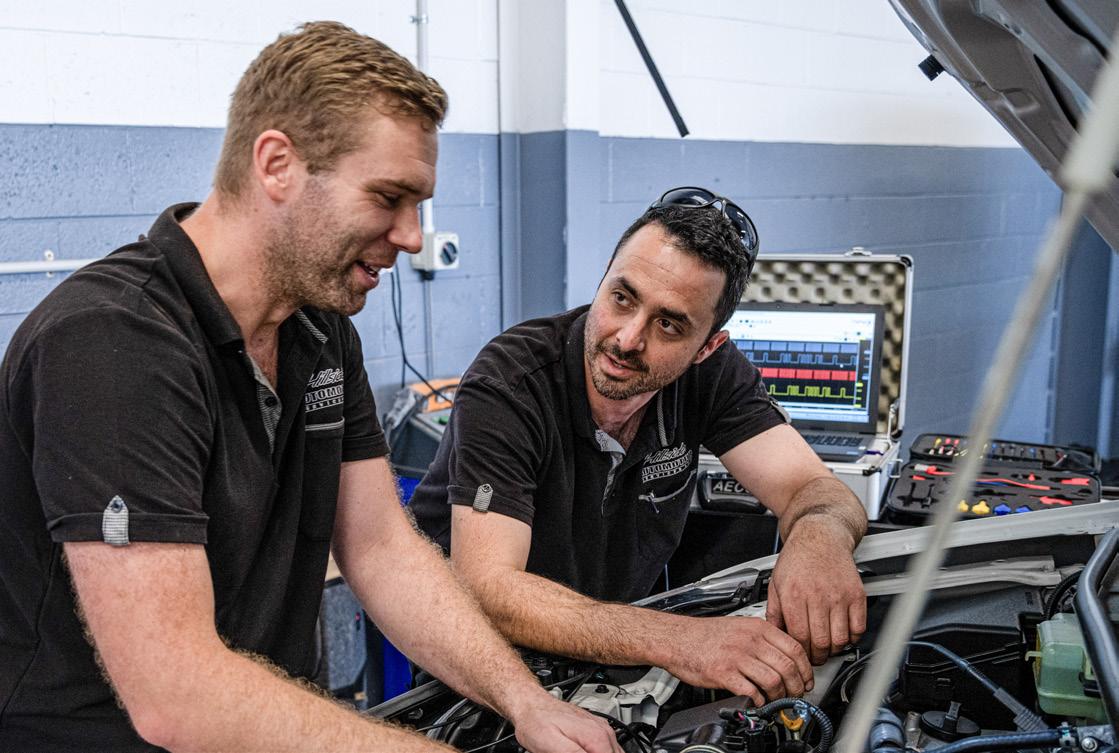
business — long hours, limited downtime, and the pressure of daily operations — continues to weigh heavily.
Financial pressures are also mounting. With cost-of-living impacts making customers more price-sensitive, 42% of Members now cite cash flow and profitability as key challenges, up from 22% in 2023. Even as businesses grow, converting that growth into sustainable profit remains a complex task.
The rise of electric and hybrid vehicles is reshaping the industry. Currently, 77% of workshops report servicing EVs, which make up 18% of their workload. Over the next decade, that figure is expected to more than double, with hybrid and battery electric vehicles projected to account for over 50% of total workload.
However, only 18% of business owners feel prepared for this shift. Many cite a lack of training, safety knowledge, and resources as key barriers. This highlights a critical need for investment in upskilling, infrastructure, and clear communication around EV readiness.
The State of the Nation report is more than just a snapshot - it’s a roadmap. For policymakers, it highlights where targeted support can make a real difference: funding for apprenticeships, mental health support for small business owners, and investment in EV training and infrastructure. For business owners, it offers practical insights and inspiration, proof that growth is possible, even in a challenging environment.
Capricorn’s commitment to advocacy ensures that the voices of its Members are heard at the highest levels. By sharing these insights with government and industry stakeholders, Capricorn is helping to shape a stronger, more sustainable future for New Zealand’s automotive sector.
As the industry continues to evolve, one thing is clear: New Zealand’s workshops are not standing still. They’re adapting, innovating, and driving forward together.

From hundreds of nominations to six outstanding winners.
We are delighted to introduce this year’s 2025 Capricorn Rising Stars Region Winners, apprentices who are not only excelling now, but are poised to become the future leaders of our trade.
This year more than 350 apprentices were nominated by Capricorn Members for the 2025 Capricorn Rising Stars Apprentice of the Year Award. Each nomination told a story of dedication, talent, and the future of our industry.
Across all six Capricorn regions (NSW/ ACT, VIC/TAS, QLD, SA/NT, WA and New Zealand) Members took the time to recognise apprentices who went above and beyond. Whether it was solving complex faults, supporting their teams, stepping into leadership, or showing up every day with a willingness to learn, these young professionals are making a difference on those around them.
“The strength of our Community lies in the people who show up, learn, lead, and lift others along the way. These Rising Stars represent not just talent, but the future of our industry, and we’re proud to stand behind them” said Brad Gannon, Group CEO.
Behind the scenes, the judging process was both thoughtful and rigorous. Each apprentice participated in two rounds of assessment, with their responses evaluated by six different judges — including Capricorn team members, Member Directors and industry experts. The process ensured that the winners not only stood out in their own workshops, but across our entire Community.
Andrew Zadow CEO Trade and one of the judges said “The standard of nominations this year was exceptional. It’s inspiring to see so many young people who are not only technically capable but already thinking like future leaders in our trade.”
We would like to thank our valued sponsors — Castrol, Repco and The Workshop Whisperer — for their support in recognising and celebrating the next generation of automotive professionals.
To all Capricorn Members who submitted a nomination, thank you for taking the time to invest in your apprentices. Your recognition helps shape careers, boost confidence and show that hard work doesn’t go unnoticed.
Our Awards help to advocate for those within the industry, raise awareness of exceptional talent and bring people together to celebrate the next generation. Our aim is to support a strong and sustainable skilled workforce for the future of the automotive aftermarket.

Morgan Transport Group
“His knowledge and patience have been an added bonus when mentoring the younger apprentices.”
Shane Mitchell
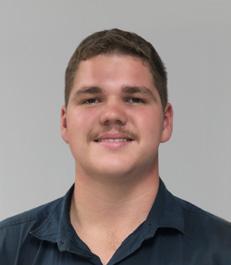
WD Auto Electrical & Air Conditioning
“Cole’s positive attitude, willingness to learn and problem-solving skills make him a highly valued team member.”
Jade White

Racing Dynamics
DONOVAN LE ROUX NEW ZEALAND
Parkway Motors
“Donovan gave up his dream to become a lawyer to work in the automotive industry… He has tremendous potential to develop into a leader.”
Ewert Burger


“Hudson’s initiative, problemsolving abilities, and genuine passion for the trade make him a standout.”
Cade Bell
ISAAC DAVIS SA/NT
Eblen Collision Repairs
“Isaac’s reliability, leadership and mentoring make him a role model in the workshop.”
Dario Tonon
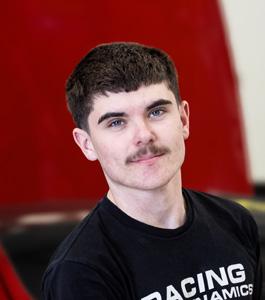
LACHLAN MADSEN NSW/ACT
Homebush Auto Electrical and Mechanical
“He wasn’t just here for a job; he was here to learn, to work hard, and to grow into something more.”
Timothy Lhuede




Capricorn is celebrating $100 million in Member Returns, including a $20 million Trade Rebate in respect of the financial year ending 30 June 2025.


Every year, Capricorn returns millions of dollars in value to Members through our Member Returns, which include a Trade Rebate, share dividend and Rewards Points* on purchases.
This year, we’re returning more than ever before, with over $100 million making its way back to the hands of Members all over Australia and New Zealand. This year’s Member Returns include a $20 million Trade Rebate, a 7-cent share dividend (fully franked in Australia and partially franked in New Zealand) and Rewards Points earned on eligible purchases.
The Trade Rebate rewards Members for spending through their Trade Account by returning a portion of Capricorn’s profits back as additional Rewards Points. These points are based on how much you spend on eligible purchases using your Trade Account during the financial year, so the more you put through the Trade Account, the more you get back.
How does the Trade Rebate work?
Automatic and easy: Capricorn calculates your rebate based on your eligible spend through your Trade Account over the past financial year.
Proportional to your spend: The more you spend, the bigger your share of the rebate. It’s a simple way to reward loyalty and support for the Capricorn Community.
Paid as Rewards Points: Your rebate is paid as additional Rewards Points, which will appear on your September statement (issued in October).
No expiry pressure: Your points do not expire, so you can use them when it suits you, whether that is buying new tools, booking a holiday and more.
If you are a Shareholder in Capricorn, for the financial year ending 30 June 2025 you will also receive a net dividend of 7 cents per share, fully franked in Australia and partially franked in New Zealand. Dividends are paid in September statements (issued in October). It is another way Capricorn shares profits with Members.
Your Rewards Points are flexible and valuable. Here’s how you can use them:
Buy equipment: Redeem points for tools, workshop equipment or office supplies.
Treat yourself: Use points for travel, gift cards and more.
Share the good times: Some Members use points to reward their team or support local causes.
Pay-off your Trade Account: Use Rewards Points to pay off your Trade Account.
Davin Storey, Director at Stokes and Renk an independent BMW and MINI service centre in Subiaco, Western Australia, reinvests his Trade Rebate and any dividends back into Capricorn shares each year.
“Years ago my accountant said it was a no-brainer,” Davin said. “If you look at the dividends for the last 10 years, they’ve been somewhere between 7 and 16 per cent. That’s a pretty good return on your money compared to the bank, and probably better than most super accounts, too. I’d be silly not to.”
Laurie Vanvitelli, Director of Moonee Ponds Smash in Victoria is reinvesting last financial year’s windfall into buying more shares.
“Being a Capricorn Member has made ordering parts and paying suppliers a breeze,” he said. “Reinvesting those Rewards Points into Capricorn just made sense.”
If, like Davin and Laurie, you’re a Capricorn Shareholder, you will have received your Wealth Certificate by now. You can access it by logging in to myCAP, using your Shareholder or Capricorn ID login details.
Please note that all figures quoted are in AUD. The past performance of Capricorn is no indication of future performance or returns. All information on this page is general information only and is not intended to be advice. Before acting on any information you should consider the relevance of it to your circumstances and, if necessary, take professional advice.
Shares are issued by Capricorn Society Limited (ACN 008 347 313). No offer of shares is made in this article or publication. An offer of shares will only made in, or accompanied by, Capricorn’s Prospectus and any Supplementary Prospectus which is available on request or may be viewed at capricorn.coop under “Corporate Documents.” Before making any decision to apply for shares you should consider the prospectus and any supplementary prospectus. Any application for shares must be made on the application form in or accompanying the Prospectus.
*Participation in Capricorn Rewards is subject to the Capricorn Rewards Terms and Conditions which can be found at cap.coop/tc.


To keep your Member account safe, Capricorn has rolled out stronger digital protections. At the heart of this upgrade are two new security features: Capricorn ID and multi-factor authentication (MFA).
Capricorn ID: Your unique personal identity
Multi-factor authentication: An extra layer of security
Every Member now receives their own unique 8-digit Capricorn ID. This is different from logging in with your Member number. It’s designed to put you in control of your logins and make access more secure and more personal.
For Shareholders, this means you can enjoy a single, consolidated myCAP view, making it easier and safer to manage both Trade and Shareholder Accounts in one place.
When accessing Rewards or transacting with Ecommerce Partners in myCAP, you’ll now be asked for a six-digit one-time password (OTP) sent straight to your phone. This simple step adds a second lock on the door, making it far harder for anyone else to sneak in.
Each Capricorn ID is linked to an individual person, allowing businesses to use separate logins to access myCAP. This brings new levels of security, transparency and accountability.
If you haven’t received your invitation to set up Capricorn ID yet, don’t worry. For now, you can keep using your Member number and password. An invitation will soon arrive in your inbox with everything you need to set up your Capricorn ID and MFA.
Think of it this way:
If someone steals or guesses a password, your Capricorn ID plus MFA keeps them out.
If team members used to share one login, now each person has their own, giving you a clear trail of activity.
If fraudsters try to impersonate you, the SMS verification adds a powerful extra layer of protection.
If you ever wonder about unusual account use, individual Capricorn IDs make it easier to detect and stop it fast.
Keep an eye on your email for setup instructions.
Capricorn’s new security measures aren’t just technical upgrades. They’re there to help Members experience a safer, stronger and more resilient digital experience. With your Capricorn ID and MFA in place, you can do business with confidence, knowing your account is protected at every step. 1 2 3 4
Register your Capricorn ID and MFA as soon as possible.
Make sure every team member has their own login and mobile for SMS verification.
Stay alert to scams. Remember, Capricorn will never ask for full bank details or payments over the phone.


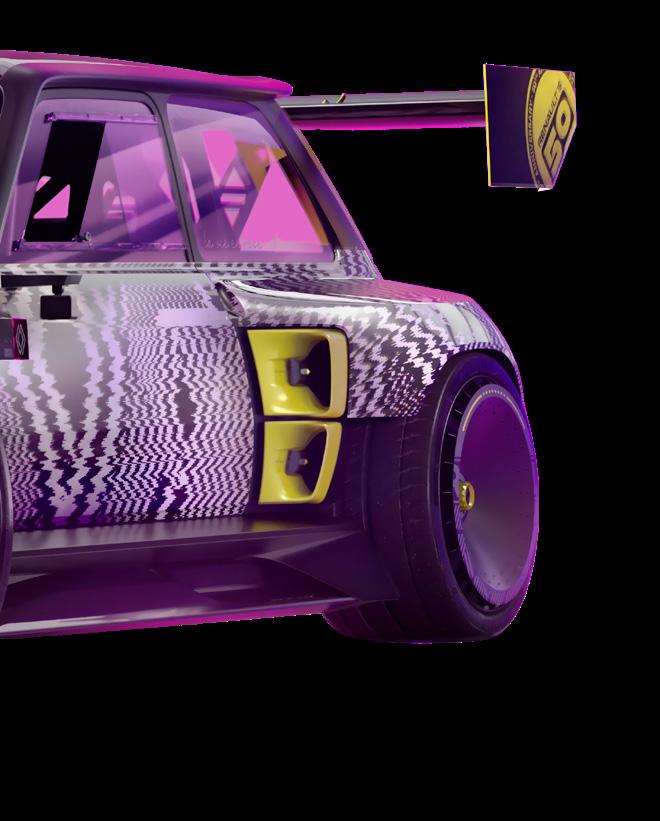





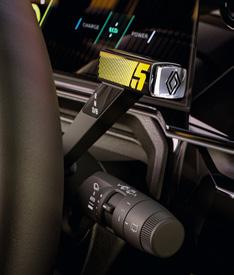








TCLASSIC / FUTURE RIDE:
he 80s are back—and in a very big way. Hollywood has just given us a new Naked Gun film. They’re also making a new He-Man movie. Not so long ago, Gen Z discovered Kate Bush and thrust her back to the top of the charts. Then, Rick Astley headlined Glastonbury and rickrolled us all. It was already enough to make anyone of a certain age nostalgic for the hole in the ozone layer, but now another icon of the 1980s is back: the Renault 5 Turbo.
In 2022, the same year as Kate Bush’s “Running Up That Hill” became a cultural phenomenon for the second time, the French manufacturer unveiled a concept for the Renault 5 Turbo 3E at the Paris Motor Show. It would be a modern, high-performance electric remake of the 1980’s classic. It was an immediate hit.
When motoring journalists finally got the chance to drive the standard production version, the Renault 5 E-Tech, at the Brussels Motor Show earlier this year, they loved it so much they named it the European Car of the Year 2025 (a title it would share with the Alpine A290).
But to understand its immediate appeal, we need to go back and take another look at the iconic original.
A second iteration, the R5 Turbo 2 was also released. It had a top speed of 200 kmh and did 0-60 kmh in 6.9 seconds. The R5 Turbo became a common site at rallies across Europe, even winning Monte Carlo in 1981.
Local teams would continue to race the R5 Turbo long after the Renault factory stopped providing support, so beloved was this car.
In other words, it had the perfect pedigree for a very successful revival. Now, we’re on the precipice of that comeback.
As a point of comparison, Renault says the base model, the E-Tech is, “at home in the city or on the open road, thanks to its 11 kW AC charger, its 80 or 100 kW DC charger and its battery up to 52 kWh, giving it a range of up to 400 km”.
It’s an ideal little runabout, with the added bonus of a towing capacity of 500 kg.
Hammond said, “isn’t cheap, it isn’t tinny, it doesn’t rattle, in fact it barely makes any noise at all, it’s electric”, and was, “great fun to drive”.

The Renault 5 story starts with a three- or five-door, front-engine, front-wheel drive, supermini hatchback, manufactured by the French automaker over two generations from 1972 to 1985 and 1984 to 1996. Competing with Leyland’s Mini and the Fiat 127, it was the bestselling car in France from the day it first came off the production line until 1986.
Richard Hammond, of Top Gear fame, said, “it was cheap, tinny, underpowered, it rattled like a biscuit tin full of teaspoons, but it oozed character and personality.”
The 5 Turbo, or R5 Turbo, was a rear midengine, rear-wheel drive, three-door hatchback, based on the 5 body, which debuted in 1980. It had a transverse 1.4L or 1.5L engine and a five-speed type 369 manual gearbox.
It had a similar looking nose to its parent model and the same instantly recognisable “greenhouse” rear hatch, but the design included a lower front spoiler, wider wheels and tyres, flares—all the fun stuff you want in a “hot hatch”.
But it’s the Renault 5 Turbo 3E that has had fans of the original R5 Turbo from all over the world salivating.
With two electric motors in the rear wheels, this rearwheel drive “hot hatch” has 410 kW of power, maximum torque of 4,800 Nm, and a top speed of 269 kmh. It has an 11 kW AC charger and up to 350 kW of DC charging power (charging from 15 to 80 per cent in 15 minutes) and a battery capacity of 70 kW.
It’ll go from zero to 100 kmh in less than 3.5 seconds—leaving the original R5 Turbo in its dust and making it the fastest accelerating Renault to date. It weighs just 1,450 kg. The driving range is likely to be about 400 km.
The catch is Renault is only releasing 1,980 of the 5 Turbo 3E—a number not chosen by accident. The first batch of 500 pre-orders were sold within 48 hours. The company announced on 24 December 2024 that it was opening expressions of interest for orders in Australia. It’s unclear how many of the 1,980 will be available down under, and it’s unclear how much they will cost, but most estimates suggest around $300,000, which is steep, but the lucky owners will get to choose their own liveries.
For the rest of us, we’ll just have to keep an eye out on the road in the hope we see one, and perhaps pop an old Kate Bush or Rick Astley cassette into the player and put it on full blast. If we can’t beat them, we can at least rickroll them.
Aftermarket auto workshops across Australia and New Zealand are facing continued challenges when it comes to finding skilled staff, despite being busier than ever. The latest State of the Nation report confirms that the skills shortage is the biggest obstacle to daily operations. The effects are immediate and apparent.
Customers are also feeling the effects. Turnaround times are getting longer and when it's really busy, some jobs are being turned away. Inside the workshop, fewer staff need to manage heavier workloads. Technicians are stretched across more vehicles, admin tasks spill into after-hours and productivity drops as fatigue sets in. Does any of this sound familiar?
If it does, rest assured that you’re not alone.
So, how can workshops manage the impacts of understaffing without compromising reputation or team morale? The good news is that there are practical ways to keep customers onside when deadlines blow out, how to decline work without losing loyalty and how to protect staff from burnout while increasing efficiency.
While long-term solutions, such as training programs and apprenticeships, are still essential, business owners also
need to focus on what can be more in the short term to stabilise workflows, safeguard their teams and deliver work that still meets the standard customers expect.
Many workshop owners will admit to saying yes to almost any job that comes through the door. They try to help everyone, but it can backfire. It can cause technicians to rush, workshops to miss promised completion times and drops in productivity levels.
Honesty is the only solution. Instead of over-promising, set clear, realistic dates from the first point of contact and explain why. You might be surprised that if you tell a customer, 'We want to fix it properly and your vehicle deserves a full inspection on Thursday’ your customer is more likely to understand and support your suggestion. The customer will have to wait a bit longer, but pressure and complaints will decrease.
The lesson is simple – timely, effective communication can reduce frustration before it starts. Some workshops now send an immediate SMS confirmation with the estimated start date, a brief outline of the work and a link to reschedule. Everybody wins – there are fewer no-shows from customers and the pressure eases on the workshop staff.
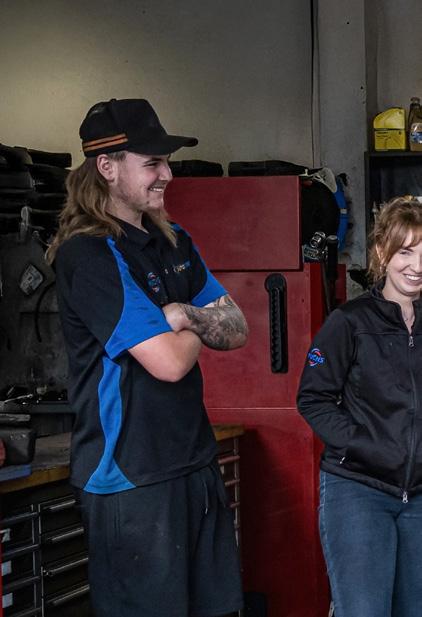
Creating some form of triage in which things are ranked in terms of importance or priority, including the allocation of resources, is growing in popularity as workloads increase.
A regional New South Wales workshop we work with created a daily 'red, amber and green' board to prioritise safety-critical issues such as brakes, steering and cooling faults. Simultaneously, routine services and cosmetic fixes are scheduled into lower-intensity periods.
The workshop owner praised this simple idea. They said, “It sounds basic, but giving the whole team a shared visual of what truly can’t wait prevents the day from getting away from us and stops productivity being spent on the wrong jobs. Prioritisation isn’t just customer-friendly, it protects technicians from the drag of constantly switching tasks.”
What happens when a regular customer calls with a problem but your capacity is chock-full? Negotiate a referral system with nearby independent and specialist workshops that handle things like auto electrical or transmission. So, when your workshop reaches capacity, you’re able to subcontract specialist jobs out.

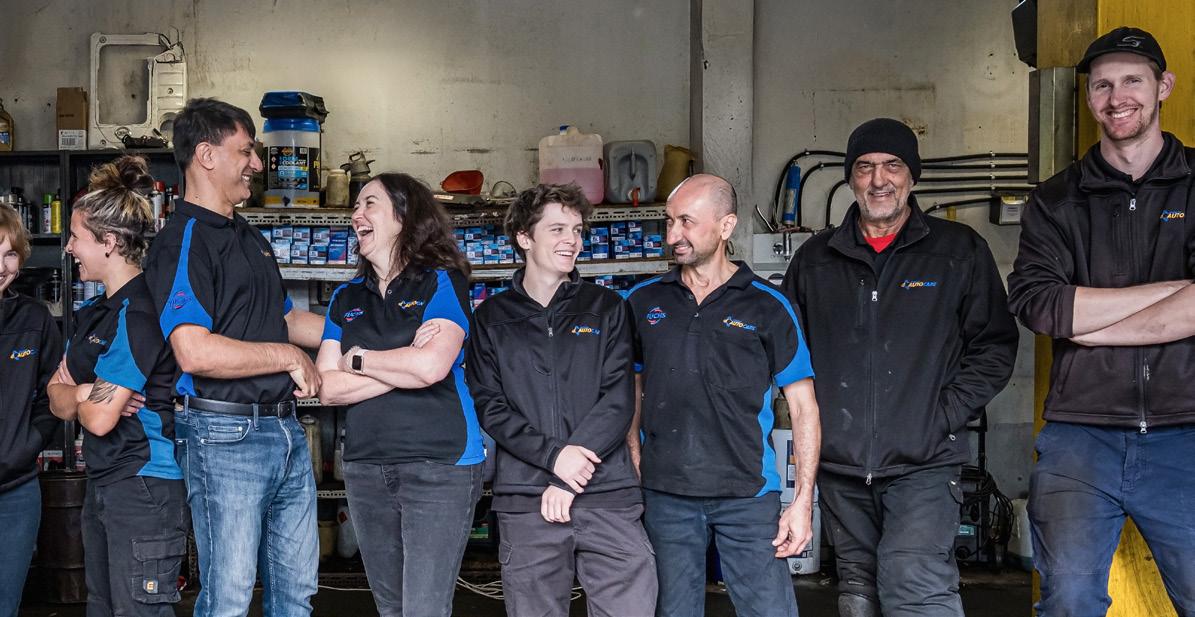
That's better than saying no, or causing long delays. Your priority is to help your customer, and you can do that by subletting certain jobs to other workshops that you trust. Chances are that you won't lose the customer. They're potentially even more likely stick with you because you went the extra mile to help solve their problem.
Bring
Managing the workload is as much about rhythm as headcount. Some workshops have introduced structured microbreaks and rotation of complex jobs. One Melbourne workshop we work with tracks heavy jobs like clutch, timing belt and major diagnostics per technician per week. “Nobody does more than two such jobs back-to-back,” the workshop manager says.“Far better to finish four jobs at 100% than five at 70%.”
You might also want to consider adding weekly team meetings to recognise wins, like catching a latent safety issue or solving a tricky CAN fault. This recognition lifts morale and keeps burnout at bay.
A Gold Coast workshop we work with shaved minutes off each job by standardising service checklists and relocating fast-moving consumables such as filters, bulbs and fluids to within a few steps of every bay.
“We thought we needed another tech,” the manager said, “but what we needed was twenty fewer trips to the parts room.” Other workshops report gains from using electronic job cards and integrated workshop management systems that can identify clearer labour lines and reduce interruptions when authorisations are needed. Estimated arrival time of parts can be programmed into job cards. One shop calls customers at 10.30am and 3.30pm like clockwork. “When you own the update, you avoid the 'just checking in' calls that break your workflow,” the service adviser says.
It's tough to think about training in busy times, but targeted upskilling helps share the workload among the technicians. Some workshops focus on short, impactful modules like air conditioning diagnostics for the younger technicians, and ADAS calibration basics for a senior technician. This approach instantly expands who can legally and confidently take on specific jobs. The hour spent learning can save many hours later on.
Apprenticeships remain crucial and so does fostering an environment where new talent stays. Some workshops have introduced staggered start times so staff can manage school drop-offs or avoid peak traffic. While they might sound simple, these measures can be extremely effective when it comes to boosting staff retention.
None of these ideas can solve the immediate problems. The workshops that are realistic about the long journey to rebalance training opportunities and staff recruitment are leading the way.
The workshops that have the best chance of thriving are doing three things consistently – they communicate early and clearly, they protect their technicians with smarter scheduling and job design and they find hidden capacity in process, workshop layout and technology.
Our advice is simple. Don’t overcomplicate things and just focus on being honest, organised and steady. If you can manage this, there’s a good chance that the situation will improve.
If there’s a silver lining, it’s that constraints of the skills shortage have prompted a more disciplined, customer-literate version of the independent workshop. Longer turnaround times may be unavoidable in the short term, and some jobs will need to be referred or sublet out.
But by leaning into transparency, triage, staff wellbeing, and smarter process, workshops can protect reputation and revenue today, while building the kind of workshop where tomorrow’s technicians will want to work.
... like the 11:59pm panic shop!

Get your festive shopping sorted early with Capricorn Rewards
To ensure delivery in time for the upcoming festive season, product orders must be placed before 15 November 2025 and vouchers before 16 December 2025*. Log in to myCAP to explore the catalogue and use your Reward Points before the festive rush!
Submit your entry at cap.coop/funzone by 30 November 2025 September winner: LUKE'S GARAGE who WON 5,000 Bonus Rewards Points
SPOT THE DIFFERENCE (5 differences to find!)

WORD HUNTER (15 words to find!)
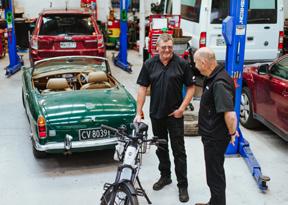
Please note that this competition and participation in the Capricorn Rewards program are subject to terms and conditions. For the full terms and conditions, visit cap.coop/tc.


Accepted by a wide range of stations across New Zealand, the Capricorn Fuel Card lets you fill up without the fuss.
Just scan your card at a participating service station and the transactions will be automatically added to your Trade Account.
Save 8 cents off a litre (incl. GST) at the pump at participating service stations
Accepted at over 290 Mobil, Allied Fuel Stop, NPD and Waitomo fuel stations
Unlimited number of cards
csl@capricorn.coop
